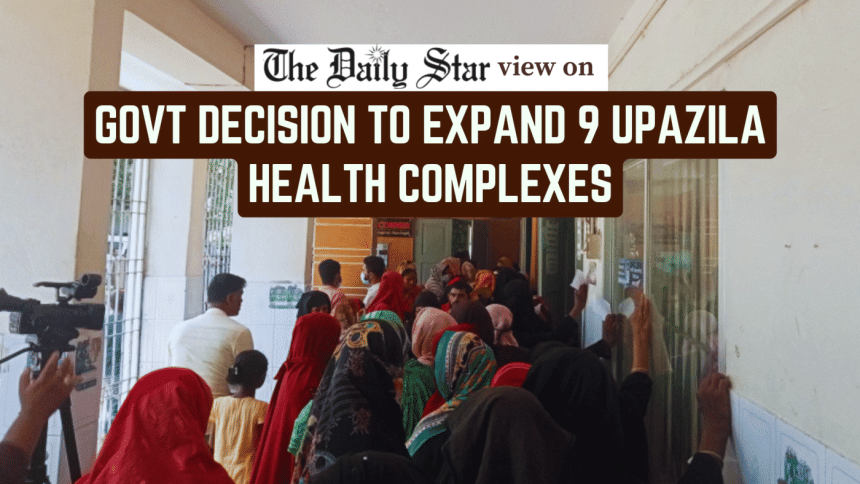Fix manpower shortages at upazila health complexes

We are concerned by the health authorities' decision to expand the capacity of nine upazila health complexes without addressing the existing manpower shortage at these facilities. The Health Services Division (HSD) has reportedly approved increasing the number of beds from 31 to 50 in eight complexes, and from 50 to 100 in the remaining one. This move comes in response to the overwhelming pressure of patients at these facilities. While the need for expansion is understandable, it raises a critical question: what purpose will this expansion serve if additional manpower is not recruited and essential equipment is not procured simultaneously?
Our upazila health complexes have long been grappling with a severe shortage of doctors, nurses, and essential staff, which severely disrupts their day-to-day services. The lack of manpower is also linked to mismanagement and inefficiency in these facilities. Moreover, absenteeism and a lack of specialist doctors have been a major barrier to providing treatment to rural people, many of whom are forced to seek treatment at district or medical college hospitals, which puts an extra burden on them.
According to an estimate by the Directorate General of Health Services (DGHS), around 59 percent of doctor positions in upazila health complexes currently remain vacant. All nine hospitals awaiting expansion are also operating with fewer doctors and nurses than the approved number of posts.
According to an estimate by the Directorate General of Health Services (DGHS), around 59 percent of doctor positions in upazila health complexes currently remain vacant. All nine hospitals awaiting expansion are also operating with fewer doctors and nurses than the approved number of posts. For instance, the Nikli Upazila Health Complex in Kishoreganj is operating with only four doctors against 17 sanctioned posts, while in Jashore's Chowgachha Upazila Health Complex, only 10 doctors are working against 32 sanctioned positions. A similar situation prevails in the other seven facilities.
We, therefore, hope that the authorities will show the same urgency in recruiting staff as they did in deciding to expand the health complexes. Currently, due to the involvement of multiple agencies, the process of recruiting manpower takes a long time. This process needs to be simplified and expedited. It is, however, noteworthy that the appointment process for 3,000 doctors is underway, and more doctors are expected to be recruited through regular and specialised BCS examinations. In the meantime, the health authorities can temporarily assign doctors to the facilities that are struggling to deal with the pressure of patients.
Nevertheless, in the long term, a better mechanism is needed to address doctor shortages. Improving the services of upazila health complexes in terms of manpower, equipment and capacity should be carried out comprehensively to ensure proper, affordable and accessible healthcare for the rural and marginalised communities of the country.


 For all latest news, follow The Daily Star's Google News channel.
For all latest news, follow The Daily Star's Google News channel. 










Comments